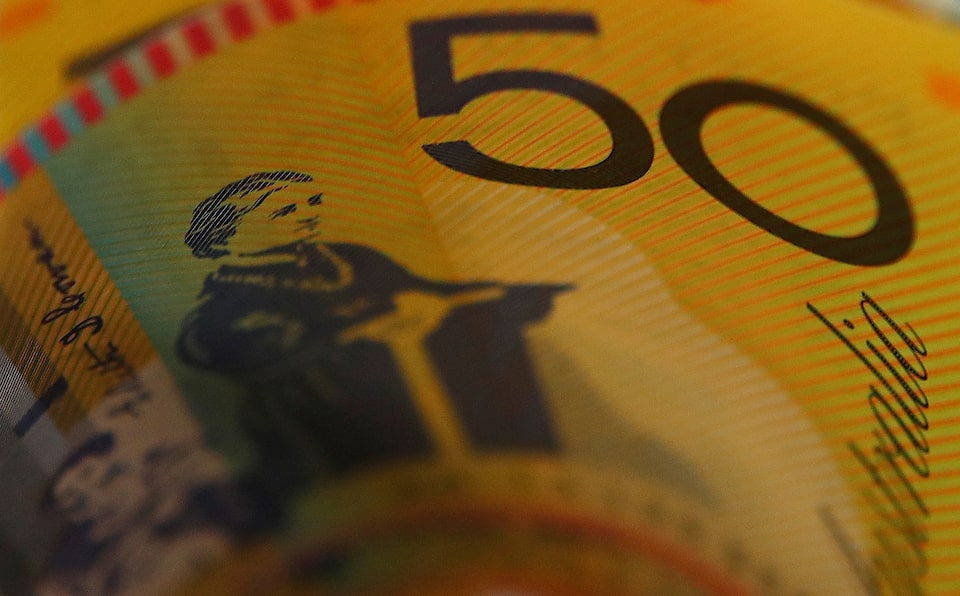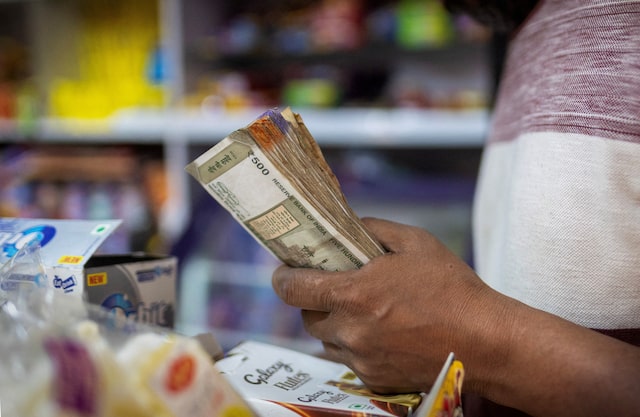Australian dollars are seen in an illustration photo February 8, 2018. REUTERS

An Australian Dollar note is seen in this illustration photo June 1, 2017. REUTERS
Summary
- Australian pension funds reconsider U.S. asset strategies
- Hedging demand changes seen in Australian funds
- Aussie dollar’s rise impacts U.S. equity returns for investors
SINGAPORE/SYDNEY, May 13 (Reuters) – Funds in Australia’s A$4.2 trillion ($2.7 trillion) pension sector are rethinking some of their long-held strategies of buying U.S. assets and the dollar, as confidence in American growth wanes.
Volatility around Sino-U.S. trade tensions this year has forced investors to reassess their U.S. exposure and the role of the dollar, which has lately failed to behave as a safe-haven currency amid heightened uncertainty around Washington’s economic policy.
While there have not yet been any major shifts in strategy, currency dealing desks in Australia have noticed modest changes in hedging demand from some pension funds.
Those hedging tweaks are under the spotlight globally and Australia’s pension funds, known locally as superannuation funds, have long kept low FX hedging ratios on large and growing foreign stock portfolios.
When U.S. equities fell, funds allowed hedging ratios to rise by not keeping their currency positions exactly in step with asset prices, said Troy Fraser, head of foreign exchange sales for Australia and New Zealand at Citi in Sydney.
“You would expect the funds to be selling Aussie and buying U.S. to adjust or to rebalance their hedge ratio,” he said.
“We’ve seen a little bit of that, but not a lot. I think funds are generally happy to be longer Aussie.”
Fraser said funds were weighing their asset mix, hedging costs and the outright level of the Aussie.
Were it to extend it could move the currency, and in separate research Citi in February estimated that a 5% shift in hedging now could push the Australian dollar as much as 11% higher against the greenback.
At about $0.64 , it’s been falling on the dollar for nearly 15 years since touching $1.10 in 2011.
Along with a tendency to drop reliably whenever global stocks fell, cushioning losses in Aussie dollar terms, the Aussie’s behaviour encouraged a low hedging ratio. Industry-wide hedging on foreign equities was roughly 22% in the December quarter, according to the most recent regulatory data.
“Unhedged has worked,” said Ben McCaw, a senior portfolio manager at MLC Asset Management.
“It was lowering the volatility of the portfolio (and) providing a positive return to the portfolio … so that was almost the ultimate asset,” he said.
Now, however, long- and short-term factors are starting to shift how the Australian currency trades. He has been reducing U.S. dollar currency exposure for about three years.
Others are keeping a watching brief. CBUS, which manages more than A$100 billion, has kept currency exposure steady but the U.S. dollar, which fell through market turbulence in April, caught the attention of fund CIO Leigh Gavin.
“The USD is probably one of the few asset classes that hasn’t rebounded from the early April lows, and we think that’s interesting,” he said. “It’s certainly something we’re monitoring, but it’s still pretty early days.”
‘QUESTIONING OUR EXPOSURE’
Some fund chiefs say U.S. allocations are under review.
Australian super funds run a high allocation to equities, by global standards, at nearly 60%, according to regulatory data, with roughly half that abroad, as of December 2024.
According to Westpac, some A$555 billion is invested in U.S. stocks by Australian domiciled investors.
“That’s been a very good place to be investing over the last couple of years,” said John Pearce, chief investment officer of A$139 billion fund UniSuper on the fund’s podcast in April.
“Like every other fund, we are questioning our exposure to the U.S. It would be fair to say that we’ve hit peak exposure and will be reducing over time,” he said.
To be sure, no increase in the fund’s hedging ratio, which typically swings between 30-40%, is being considered, a UniSuper spokesperson said in emailed remarks to Reuters. And there are very big funds that are not budging in their strategies.
“We have no view of changing our hedge position or any of our positions based on that event,” said Michael Clavin, head of income and markets at Aware Super, referring to last month’s tariff-driven drawdown and market volatility.
The chief investment officer of AustralianSuper, the largest super fund with more than A$365 billion under management, also told the Financial Times last month it would continue investing more than half its offshore flows into the U.S.
Still, the Aussie’s 3% rise against the U.S. dollar this year has meant the year-to-date 0.6% drop in the S&P 500 (.SPX), translates to a near 3.5% fall in Australian dollar terms, which if it persists or extends could start to drive a response.
“Being underweight the Aussie dollar has been something which has typically rewarded Australian investors,” said Cameron Systermans, head of multi-asset in the Asia-Pacific at fund manager and adviser Mercer.
“So if there were to be a durable uptrend in the Aussie dollar, that would be a bit of a pain trade, I think, for a lot of the asset owners in Australia. And it might force them to really reassess whether that still makes sense.”
($1 = 1.5625 Australian dollars)
Reporting by Tom Westbrook; Editing by Sam Holme





